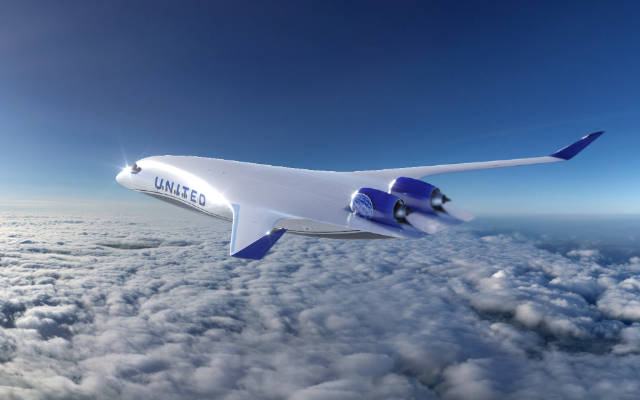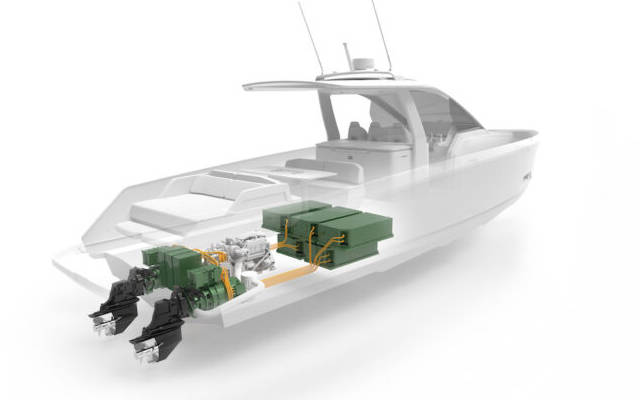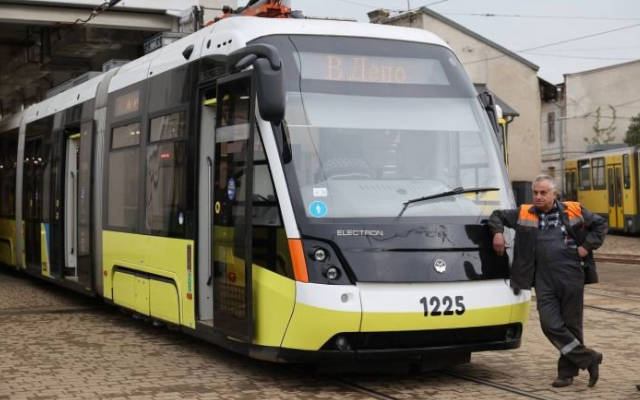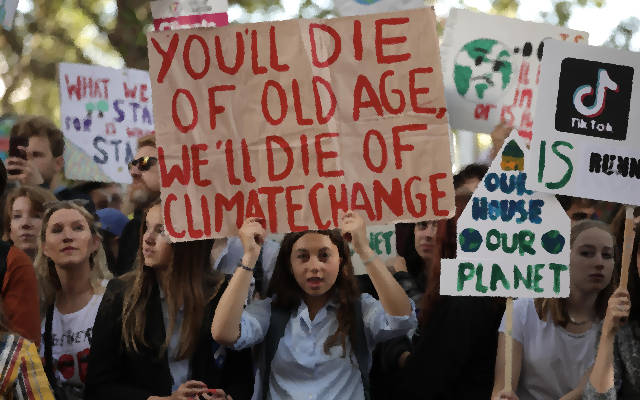 EDITOR'S PICK
EDITOR'S PICK
Z4 Hydrogen Aircraft: A Blended-Wing Leap Toward Zero-Emission Aviation
04 Sep 2025 | Synopsis
 JetZero's Z4 aircraft, developed with SHZ Advanced Technologies, uses cryogenic liquid hydrogen and a blended-wing design to achieve zero-emission flight. Capable of carrying 250 passengers over 9,000 km, it burns hydrogen in modified jet turbines, emitting only water vapor. While infrastructure and safety challenges remain, the Z4 represents a major leap toward sustainable, long-haul aviation.
JetZero's Z4 aircraft, developed with SHZ Advanced Technologies, uses cryogenic liquid hydrogen and a blended-wing design to achieve zero-emission flight. Capable of carrying 250 passengers over 9,000 km, it burns hydrogen in modified jet turbines, emitting only water vapor. While infrastructure and safety challenges remain, the Z4 represents a major leap toward sustainable, long-haul aviation.Sialia 45: Can A 15-meter Electric Boat Be A Cruiser?
04 Sep 2025 | Synopsis
 The Sialia 45 is a 15-meter electric cruiser that challenges conventional expectations of range and performance. Built with lightweight carbon fiber and powered by advanced battery systems, it offers silent, zero-emission cruising with luxury features. Designed for day trips or short coastal voyages, it represents a new class of sustainable yachting without sacrificing comfort or style.
The Sialia 45 is a 15-meter electric cruiser that challenges conventional expectations of range and performance. Built with lightweight carbon fiber and powered by advanced battery systems, it offers silent, zero-emission cruising with luxury features. Designed for day trips or short coastal voyages, it represents a new class of sustainable yachting without sacrificing comfort or style.Electronmash: Building Electric Transit in Wartime Ukraine
04 Sep 2025 | Synopsis
 Electronmash, based in Lviv, continues producing electric trams, buses, and trolleybuses despite wartime disruption. Focused on Ukraine's domestic market, it supplies cities with modular, low-floor vehicles tailored to local needs. Though resilient and EU-compatible, it faces stiff competition from European manufacturers like Solaris and VDL. Post-war, it could play a key role in regional electrified transit.
Electronmash, based in Lviv, continues producing electric trams, buses, and trolleybuses despite wartime disruption. Focused on Ukraine's domestic market, it supplies cities with modular, low-floor vehicles tailored to local needs. Though resilient and EU-compatible, it faces stiff competition from European manufacturers like Solaris and VDL. Post-war, it could play a key role in regional electrified transit.Audi's Concept C: A Bold New Chapter in Electric Performance
03 Sep 2025 | Synopsis
 Audi's Concept C is a bold electric roadster that redefines the brand’s design and performance ethos. Inspired by Bauhaus minimalism and motorsport heritage, it features a dual-motor PPE platform, 89kWh battery, and over 300 miles of range. Slated for 2027 production, it positions Audi as a premium EV innovator, countering tech-heavy rivals with emotional clarity and radical simplicity.
Audi's Concept C is a bold electric roadster that redefines the brand’s design and performance ethos. Inspired by Bauhaus minimalism and motorsport heritage, it features a dual-motor PPE platform, 89kWh battery, and over 300 miles of range. Slated for 2027 production, it positions Audi as a premium EV innovator, countering tech-heavy rivals with emotional clarity and radical simplicity.Scientists Slam tRump Administration's Climate Report as a 'Mockery'
02 Sep 2025 | Synopsis
 Over 85 scientists condemned a Trump Administration climate report for misrepresenting data and downplaying climate threats. Critics say it mimics the "tobacco strategy" - manufacturing doubt to delay action - by cherry-picking evidence and bypassing peer review. Led by fossil fuel allies, the Department of Energy's review promotes fossil fuel industry interests and could influence future policy despite broad scientific rejection.
Over 85 scientists condemned a Trump Administration climate report for misrepresenting data and downplaying climate threats. Critics say it mimics the "tobacco strategy" - manufacturing doubt to delay action - by cherry-picking evidence and bypassing peer review. Led by fossil fuel allies, the Department of Energy's review promotes fossil fuel industry interests and could influence future policy despite broad scientific rejection.
 Si Exclusive
Si Exclusive
Hydrogen's Flight Path: Fuel Cells, Turbines, and the Economics of Clean Aviation
10 Oct 2025 |  Aviation is shifting from Jet A to four fuel systems: electricity, hydrogen (fuel cell and combustion), SAF, and petroleum. Fuel cells suit short-haul aircraft; hydrogen combustion may power long-range jets. SAF bridges legacy fleets. Hydrogen costs - $5-$7/kg today, possibly $2/kg by 2040 - impact ticket prices and infrastructure decisions. Airport authorities, airlines, and governments will share deployment costs. Each fuel has distinct environmental pros and cons shaping aviation's net-zero future.
Aviation is shifting from Jet A to four fuel systems: electricity, hydrogen (fuel cell and combustion), SAF, and petroleum. Fuel cells suit short-haul aircraft; hydrogen combustion may power long-range jets. SAF bridges legacy fleets. Hydrogen costs - $5-$7/kg today, possibly $2/kg by 2040 - impact ticket prices and infrastructure decisions. Airport authorities, airlines, and governments will share deployment costs. Each fuel has distinct environmental pros and cons shaping aviation's net-zero future.
Ferrari Elettrica: Electrified, Not Tamed
09 Oct 2025 |  Ferrari's Elettrica EV delivers over 1,000 hp via quad motors, hitting 0-100 km/h in 2.5s with a 330+ mile range. Its 122 kWh battery sits low for balance, paired with active suspension and rear steering. Designed by LoveFrom, the four-door GT aims to preserve Ferrari's emotional DNA. Priced around $580K, it launches in 2026 in Europe and the U.S., with hybrids and ICE models still dominating until 2030
Ferrari's Elettrica EV delivers over 1,000 hp via quad motors, hitting 0-100 km/h in 2.5s with a 330+ mile range. Its 122 kWh battery sits low for balance, paired with active suspension and rear steering. Designed by LoveFrom, the four-door GT aims to preserve Ferrari's emotional DNA. Priced around $580K, it launches in 2026 in Europe and the U.S., with hybrids and ICE models still dominating until 2030
Are Self-Driving Cars Safer Than Humans? The Data May Surprise You
09 Oct 2025 |  Studies show autonomous vehicles (AVs) are generally safer than human drivers, avoiding most rear-end and broadside crashes and performing better in poor weather. However, AVs struggle with complex maneuvers like unprotected turns and low-light conditions. If AVs are just 10% safer, they could prevent 600,000 U.S. deaths over 35 years. As EVs become autonomy platforms, safety depends on how well they interpret real-world scenarios
Studies show autonomous vehicles (AVs) are generally safer than human drivers, avoiding most rear-end and broadside crashes and performing better in poor weather. However, AVs struggle with complex maneuvers like unprotected turns and low-light conditions. If AVs are just 10% safer, they could prevent 600,000 U.S. deaths over 35 years. As EVs become autonomy platforms, safety depends on how well they interpret real-world scenarios
 11 Oct 2025 14:14:33 UTC |
RECENT PODCASTS
BYD Soars - Cheaper Tesla Models - The Bolt is Back - Rivian
SEARCH RSSTREAM
 29 New Postings In Past 24 Hours
29 New Postings In Past 24 Hours
Category:mobility
Region:Europe
Date:11 Oct 2025
Category:mobility
Region:Europe
Date:10 Oct 2025
Category:energy
Region:Global
Date:10 Oct 2025
Category:mobility
Region:SoAmerica
Date:10 Oct 2025
Category:energy
Region:NoAmerica
Date:10 Oct 2025
Category:mobility
Region:NoAmerica
Date:10 Oct 2025
Category:finance
Region:AsiaPacific
Date:10 Oct 2025
Category:policy
Region:NoAmerica
Date:10 Oct 2025
Category:finance
Region:NoAmerica
Date:10 Oct 2025
Category:mobility
Region:AsiaPacific
Date:10 Oct 2025
Category:policy
Region:NoAmerica
Date:10 Oct 2025
Category:mobility
Region:NoAmerica
Date:10 Oct 2025
Category:autonomy
Region:NoAmerica
Date:10 Oct 2025
Category:mobility
Region:AsiaPacific
Date:10 Oct 2025
Category:finance
Region:NoAmerica
Date:10 Oct 2025